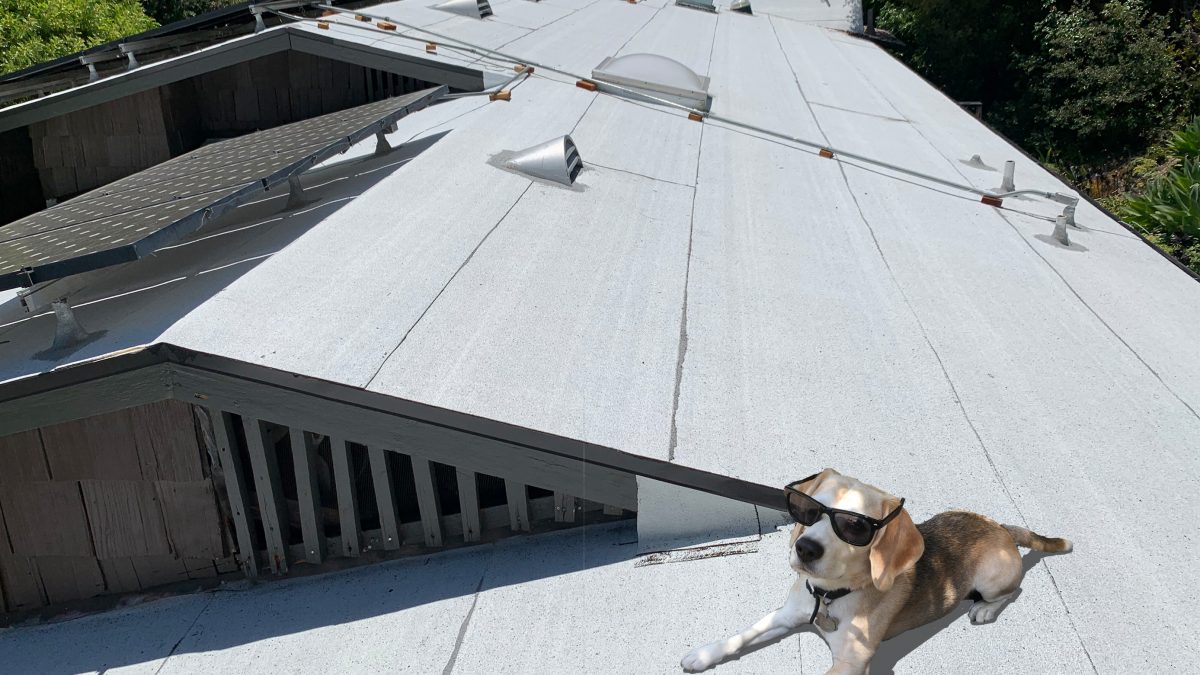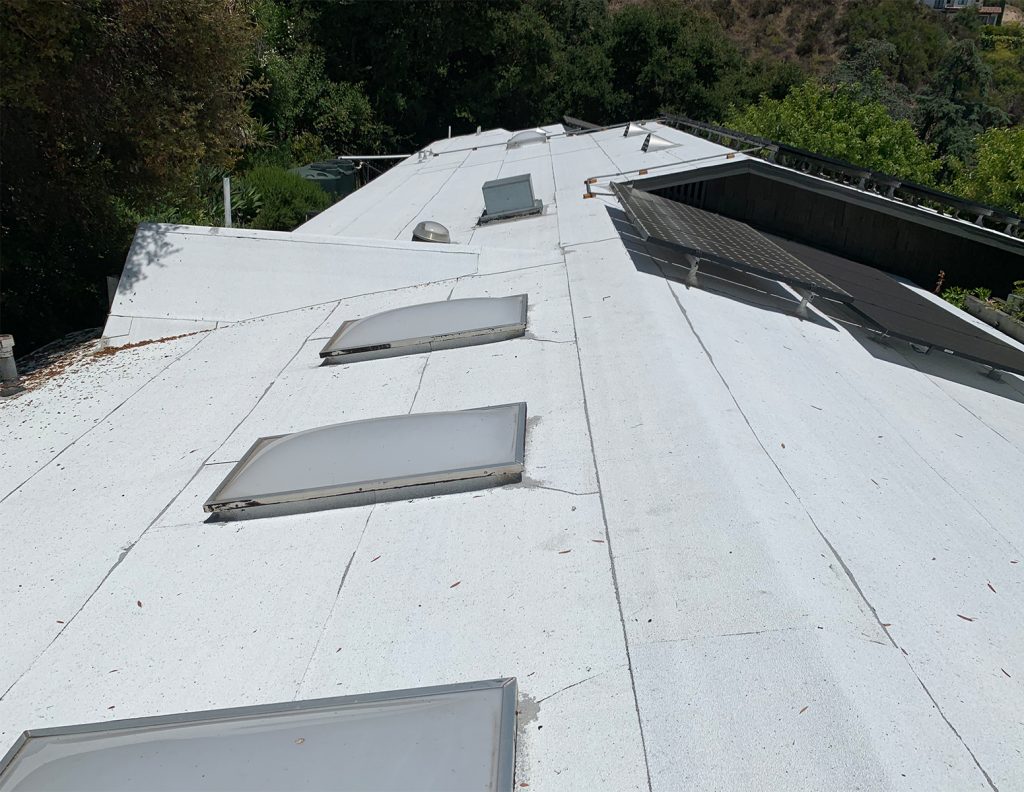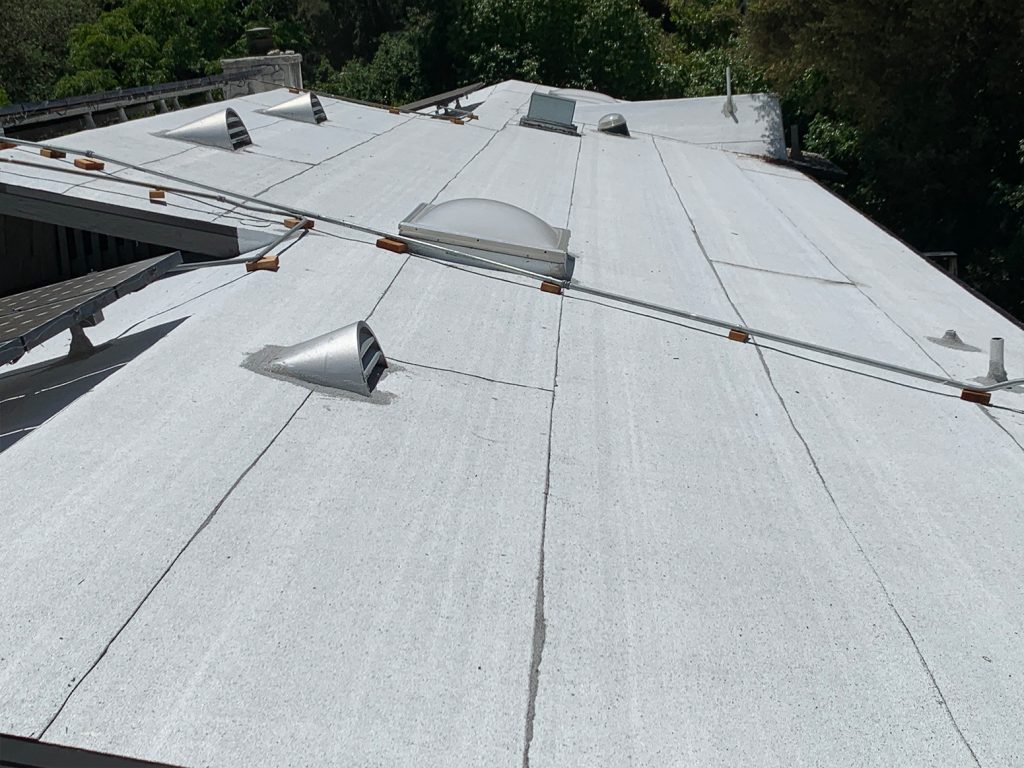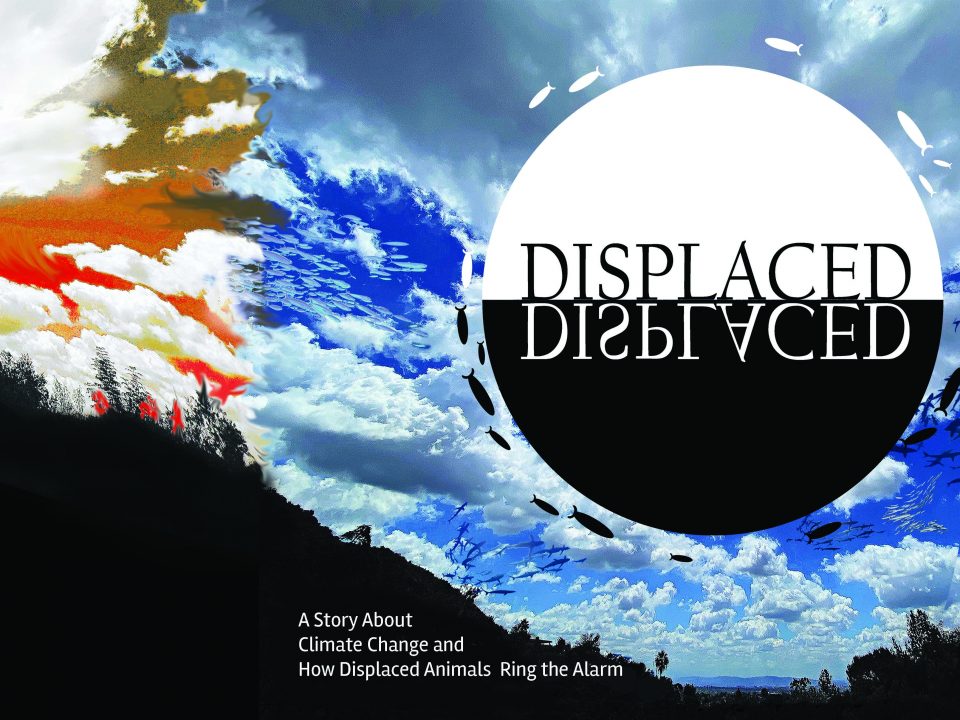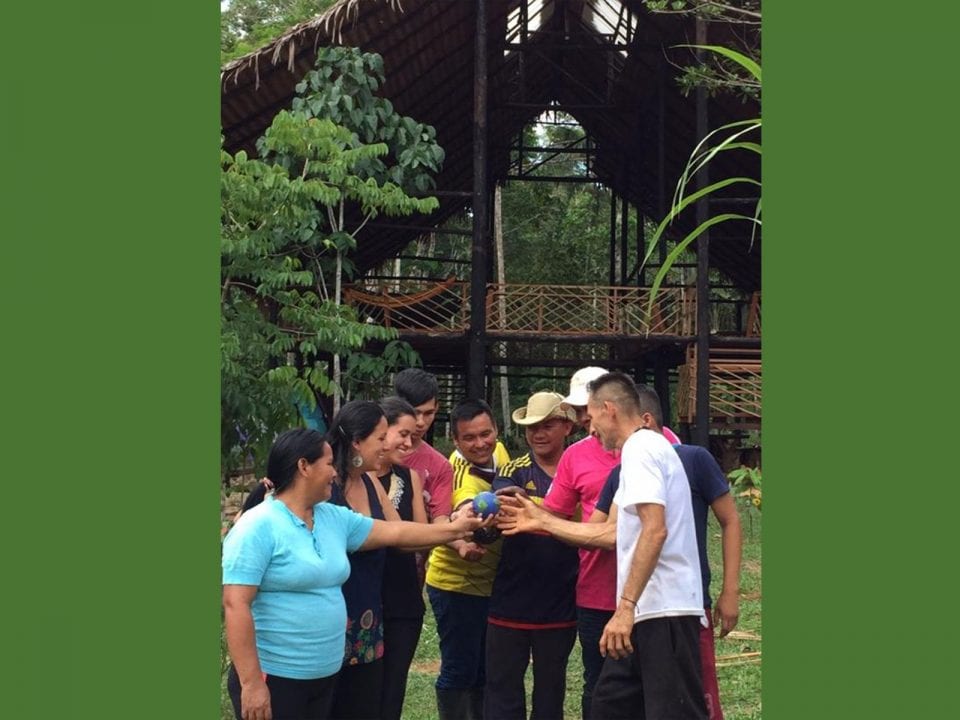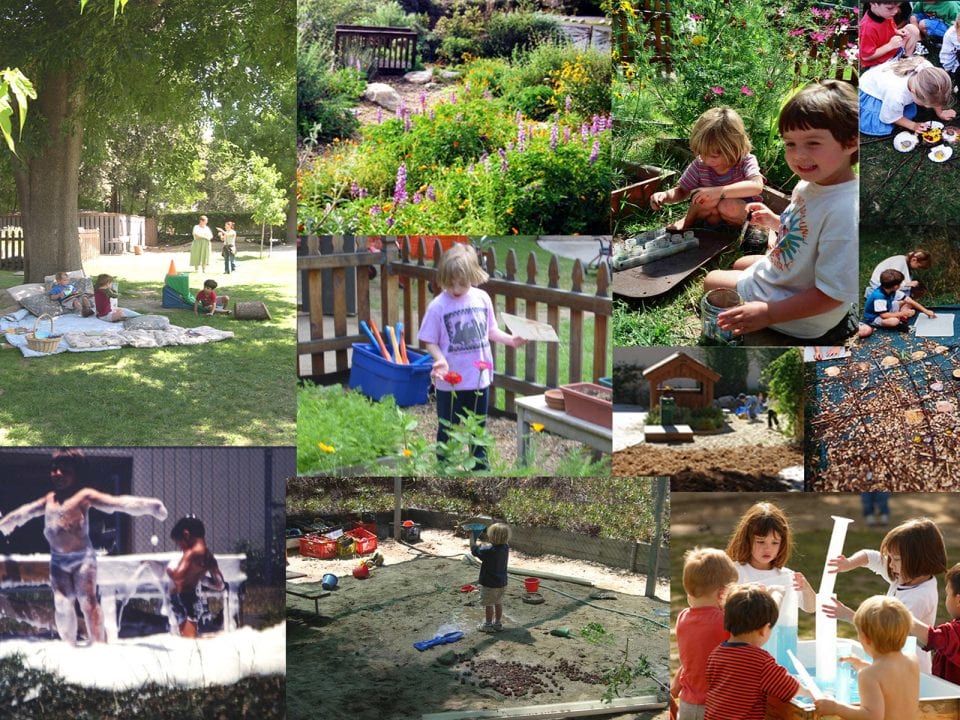- Did you receive a globe? Congratulations! Click Here for the Next Step!

Talking About Climate Change
July 3, 2019
Rancho Learning Center
July 3, 2019A Hot New Trend to Stay Cool
Our home roof was 30 years old and leaking in many places so it was time to re-roof. We have a slightly sloping roof. California codes have been changed to require us to replace our modified bitumen roof with one that is white. We are so happy we did because our white roof reflects the sun so much better than the charcoal gray one we used to have. It is so reflective that you have to wear sunglasses when you are out on the roof.
Our roof keeps the house cooler and the city cooler. It saves air conditioning energy use during our hot summer months, which translates to a savings in cost and most importantly a reduction in C02 emissions.
Here is some additional information to explain why (as found in Wikipedia under Urban Heat Island and quoted below):
An urban heat island (UHI) is an urban area or metropolitan area that is significantly warmer than its surrounding rural areas due to human activities. The temperature difference usually is larger at night than during the day, and is most apparent when winds are weak. UHI is most noticeable during the summer and winter. The main cause of the urban heat island effect is from the modification of land surfaces.[1][2] Waste heat generated by energy usage is a secondary contributor.[3] As a population center grows, it tends to expand its area and increase its average temperature. The term heat island is also used; the term can be used to refer to any area that is relatively hotter than the surrounding, but generally refers to human-disturbed areas.[4]
The temperature difference between urban areas and the surrounding suburban or rural areas can be as much as 5 °C (9.0 °F). Nearly 40 percent of that increase is due to the prevalence of dark roofs, with the remainder coming from dark-colored pavement and the declining presence of vegetation. The heat island effect can be counteracted slightly by using white or reflective materials to build houses, roofs, pavements, and roads, thus increasing the overall albedo of the city.[71] Relative to remedying the other sources of the problem, replacing dark roofing requires the least amount of investment for the most immediate return. A cool roof made from a reflective material such as vinyl reflects at least 75 percent of the sun’s rays, and emit at least 70 percent of the solar radiation absorbed by the building envelope. Asphalt built-up roofs (BUR), by comparison, reflect 6 percent to 26 percent of solar radiation.[72]

